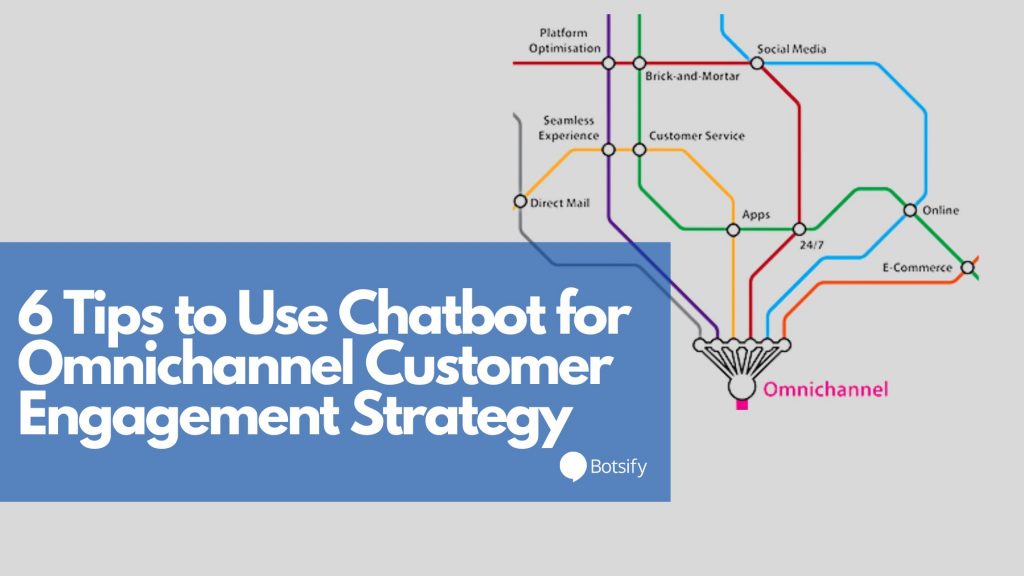The contemporary market is as much about customer service as it is about prices and products, with most consumers now agreeing that the experience itself is at least as relevant as more traditional elements of sales. If you want to compete in ecommerce, you’ll need to leverage omnichannel marketing in order to facilitate convenient engagement across a variety of channels.
While chatbots have been around for a long time, they have only recently been used in conversational marketing for commerce. In this article, we’ll cover some of the most important benefits of AI-based chatbots and go over 6 best practices for implementing chatbots in your customer service practices.
1. Reduce Your Support Workload
Contemporary chatbots can’t understand every question a customer might have, but they can go a long way toward minimizing the workload for your support team. This will free up time for them to respond to more complicated inquiries and help you provide responsive support without spending more money on customer service.
One easy way to reduce that workload is to have your chatbot provide resources from your Help Center or FAQ page. Companies spend far too much time and money talking to customers who could find the same answer somewhere on the website.
Chatbots are the perfect starting point for support interactions since they can filter out a high percentage of requests without ever having to involve a human customer service agent. Instead of taking up your support team’s time, these users will get a quick answer from the chatbot or at least an indication of where they can find an answer on your site.
2. Send Notifications Through a Chatbot
Chatbots are primarily used for support, but they can also offer other kinds of customer service. Messages from a chatbot are generally perceived differently than promotional emails or texts since customers associate chatbots with help rather than marketing.
If you’re currently using email or SMS for your cart abandonment workflow, for example, switching to a chatbot notification could be a great way to boost your e-commerce conversions and generate more sales. Of course, you should use A/B testing to track these results and confirm that your customers are responding to your chatbot messages.
Chatbots can also be used for other notifications and reminders such as following up for product reviews or asking for other forms of feedback. Rather than simply using them for support, you should approach chatbots as an integral part of your sales strategy.
3. Develop More Engaging Messaging
One common complaint about chatbots is that they’re too generic, with every customer receiving the same set of messages. While it’s true that current AI-based chatbots are limited in scope, this doesn’t mean that they have to be boring.
Some brands may prefer to use a more formal tone, particularly those that primarily sell to other businesses. On the other hand, casual phrasing and word choice are often more effective when talking to consumers, and these elements can make your chatbots seem more engaging to the average user.
With that in mind, your preset chatbot messages should always be written like any other content you would send your audience. If you’re usually more casual, that should be reflected in your chatbot sequences. This will create a more cohesive impression among your users regardless of the channel they use to engage.
4. Add Chatbots to Your Website
Getting a lead to visit your website is a big step toward a sale—it’s critical to maximize conversions at this point by moving as many users as possible through your sales funnel.
Chatbots give you a unique opportunity to proactively respond to customer questions and concerns, which will build trust and increase the chance that they end up making a purchase.
More and more businesses are adding chatbots to their websites with context-specific messages depending on user behavior.
For example, you might configure a message to send whenever a lead accesses your shipping page. Even if the same information is available somewhere on your website, leads will appreciate having the opportunity to get those answers directly from a chatbot.
5. Use Chatbots for an Omnichannel Strategy
Omnichannel marketing is all about creating a seamless customer experience across channels, and chatbots make it easy to interact with customers on a variety of platforms. Furthermore, contemporary marketing automation tools allow brands to centralize user data in order to maintain a unified user profile across multiple channels.
Along with your website and app, chatbots can also appear on other platforms including WhatsApp and Facebook Messenger. A strong customer-focused chatbot will draw on previous interactions, streamlining the support process and resolving inquiries more quickly without having to start from scratch for each new request.
6. Gather Customer Feedback
Your chatbot is ultimately there to smooth out the customer experience, so you should make an effort to understand how it’s affecting your audience. It’s easy to miss issues with the customer experience if you don’t go to your users to gather direct feedback.
The easiest way to gather feedback is to ask customers about their experience after each support interaction. Consider offering a small gift—something like 10% off their next order—in exchange for filling out a short survey. Take note of common complaints and make an effort to continually optimize your chatbots in order to respond more effectively to customer preferences.
In addition to asking your customers, don’t forget to periodically visit your own site to get a feel for how it works in practice. More people are using the internet on mobile devices every year, so make sure to go through the site on both a desktop and a smartphone or tablet.
Chatbots come with some negative connotations, but the truth is that they’re one of the most powerful tools for reliable, responsive customer service in 2021. These tips will help you integrate omnichannel chatbots into your existing practices to resolve inquiries more quickly while reducing your overall support budget.

